The Boa Constrictor has been re-classified as three separate species, but most common in captivity are the Common Boa (Boa imperator) and the Red Tail Boa (Boa constrictor). In this Boa Constrictor care sheet we’ll look at how to keep both of them happy and healthy.
Last updated on February 1st, 2023 at 09:42 am
A quick note on Boa Constrictor taxonomy…
Though previously considered one, there are now three species of Boa that used to be called “Boa constrictors”. These are the Sonoran Boa (Boa sigma), the Common Boa (Boa imperator) and the Red Tail Boa, or True Red Tail Boa (Boa constrictor).
Common Boas (often referred to as BIs or BCIs) are widely available, cheap, and hardy.
Red Tail Boas (often referred to as BCs or BCCs), on the other hand, are slightly larger and very highly sought after. As the name implies, it is their deep, mahogany red tails that give them this name.
The Sonoran Boa, for its part is much less common in captivity and has slightly different care requirements. For this reason, it won’t be covered by this care sheet.
To make things simple, any time I say “Boa Constrictor” I’m referring to both Common Boas and Red Tail Boas.

Boa Constrictor length
This is obviously the first thing you want to know if you’re new to giant snakes. After all, Boa Constrictors have a big, scary reputation as a big, scary snake!
The Truth is their size is often exaggerated, even by reputable sources. Why? Who knows? Maybe it’s a ‘big fish story’ kind of situation. In any case, an experienced keeper will tell you it’s hard to find a Boa Constrictor over 11ft (3.3m) in length. In fact, most end up between 5-8ft (1.5-2.4m). This size does depend on species and subspecies, however, which we’ll discuss in a moment.
It’s also worth noting that males are much smaller than females. This means a male could be a good choice for you if you want a snake that will be just a little bigger than a female Ball Python.
Unlike Pythons, Boas bear live young. Most neonate (newborn) boas are around 1-1.5ft long (30-45cm). They grow rapidly and should reach 3ft (1m) within a year.
Types of Boa Constrictors

This table gives a brief run-down of the current Boa Constrictor taxonomy. If using a mobile device, you may need to scrool right to see the availability column.
| Species | Subspecies | Size | Availability |
| Red Tail Boa (Boa constrictor constrictor) | True Red Tail Boa (B c. constrictor) | Up to 12 ft (3.5m) for females, up to 8ft (2.4m) for males though generally less | Widely available but still pricey. Can be harder to find outside of North America |
| Argentine Boa (B c. occidentalis) | Similar to B. c. constrictor | Hard to find in Europe, but slightly more common in North America. Still expensive | |
| Amaral’s Boa (B c. amarali), a.k.a. Short-tailed Boa | 5-6.5ft (1.5-2m) for females, 4-5ft (1.2-1.5m) for males | Uncommon in captivity but slowly becoming more available | |
| Pearl Island Boa (B c. sabogae) | Up to 6ft (1.8m) for females, up to 5ft (1.5m) for males | Very uncommon in captivity | |
| Orton’s Boa (B. c. ortonii) | Roughly 4-5ft (1.2-1.5m) for males, up to 9ft (2.7m) for females | Very uncommon in captivity | |
| St. Lucia Boa (B. c. orophias) | Reportedly up to 10ft (3m) | Not available in captivity | |
| Ecuadorian Boa (B. c. melonogaster), a.k.a Black-tailed Boa | Similar to B. c. constrictor | Very uncommon in captivity | |
| Long-tailed Boa (B. c. longicauda) | Small and slender. Up to 7ft (2.1m) for females, 5ft (1.5m) for males | Uncommon in captivity | |
| Common Boa (Boa imperator) | No subspecies described as yet | Stocky but smaller than Red Tail Boas. 3-6ft (1-1.8m) for males, 4-8ft (1.2-2.4m) for females | Very common and cheap in captivity |
| Sonoran Boa (Boa sigma) | No subspecies described as yet | 4ft (1.2) for males, up to 6ft (1.8m) for females | Still uncommon in Europe, but becoming more available in North America |
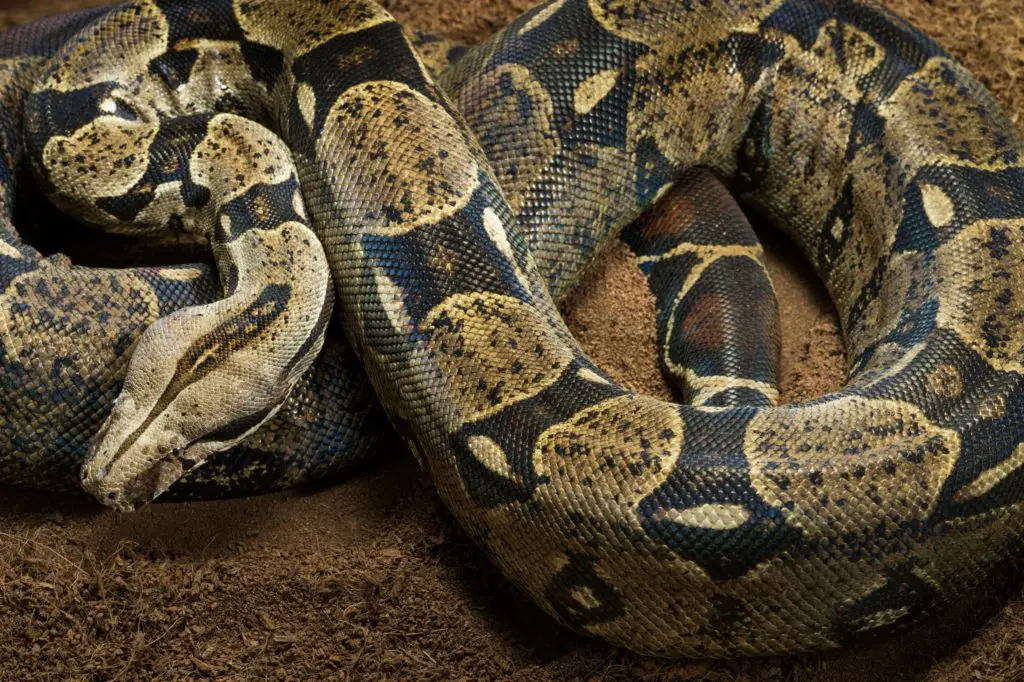
Boa Constrictor temperature and heating
As with most reptiles, Boas like a to have a thermal gradient to regulate their metabolism. In a captive setting this simply means creating a warm end and a cool end in the enclosure. During the day, the warm end should be between 85-90f (29-32c) and the cool end 80-85f (26-29c).
At night, the ambient temperature should drop slightly, going down to 75-80f (24-25c) on the cool side. This can be achieved with a thermostat that has a nighttime setting.
Some resources are now recommending even cooler nighttime temperatures for adults. To my mind, this is simply too low and will increase the risk of respiratory infections.
Most Boa constrictors available as pets originated in jungle near the equator, and this is where their wild population density is highest. From my time camping in lowland rainforest, I can tell you that it never drops below 72F (22C)!
If your temperatures are too low, regurgitation and potentially life-threatening respiratory infections will be the result.
Make sure to regulate heat with a high quality thermostat and maintain a constant temperature year round. Again, most Boa Constrictors originated in the tropics, where temperatures and climate are both incredibly stable.
To measure temperatures, I recommend checking daily with a thermometer gun, and placing a digital thermometer on each end of the enclosure. If using a heat mat, it’s good idea to place one of the thermometer probes under the warm hide.
Heating appliances
For young animals and smallish males, heat pads work very well when regulated with a pulse proportional or on/off thermostat. Never use them without one! Just remember that heat pads have to be used under plastic tubs with the thermostat probe stuck between them and the bottom of the tub.
In vivariums, heat mats have to be used inside a special mat cover, with the probe stuck on top. This isn’t very practical however, and I would recommend opting for a ceramic heat emmiter with a safety guard fitted to prevent burns.
For large adults, ceramic heat emitters or heat strips can be used. Both of these are safe and highly effective when combined with a pulse proportional thermostat.
When using a ceramic heat emitter, place the thermostat probe in mid-air a few inches above the floor of the warm side, but not directly under the emitter. If using a heat strip, install the thermostat probe between it and the underside of the enclosure, but remember that they won’t work properly on the outside of a vivarium, only on plastic tubs.
When heating adult Boas don’t forget that large snakes need a larger warm area – not just 1 square ft out of 8 (30 square cm out of 240)! Roughly 40% of the enclosure should be the warm end, and in a very large enclosure this is probably best achieved with a high-powered ceramic heat emitter.
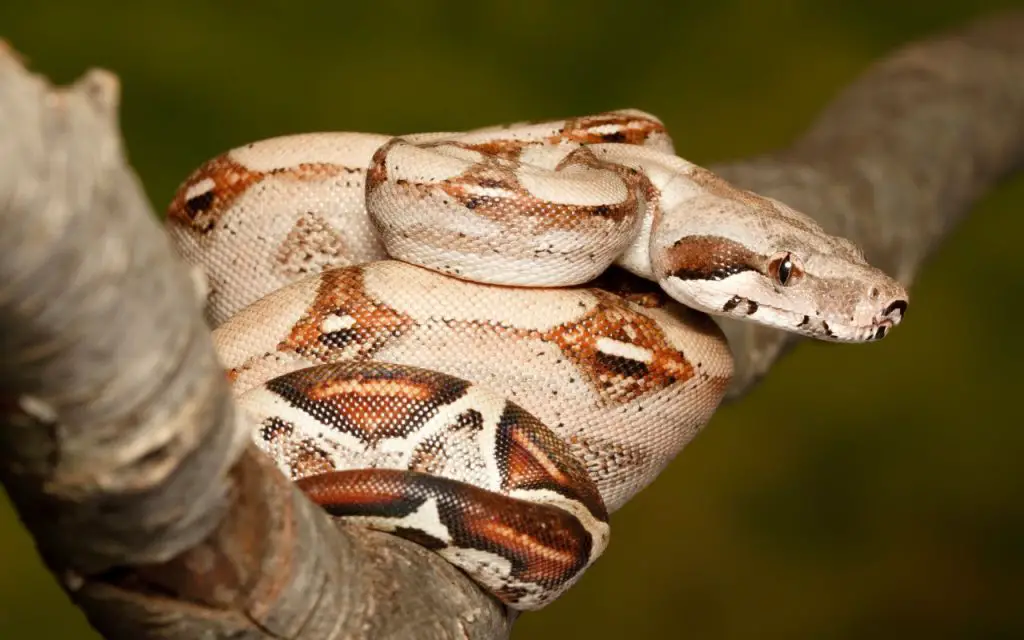
Boa constrictor humidity and shedding
As I mention earlier, Boa Constrictors are mostly from humid areas of tropical south America. In these regions humidity can be exceptionally high year-round.
In captivity, however, we have to be slightly more cautious with humidity as it can lead to an increase in bacteria and mould growth unless excellent ventilation is provided.
For captive Boa Constrictors, humidity should be maintained at 60-70%. With the humidity in this range your snake will shed in one piece without difficulty. If you do notice incomplete sheds, it’s a good idea to get into the habit of spraying the enclosure during the late stages of shedding.
Boa constrictor enclosure
Boas change their habits over time, starting off as relatively arboreal babies then transitioning to more terrestrial adults.
This type of transition occurs in many reptile species and allows the babies to avoid either competing with adults or being eaten by them. An excellent example of this is the Komodo Dragon, that has to remain in the treetops until it is big enough to ward off heavier adults.
As babies it’s quite natural to climb, so for young boas, branches will stop them from getting frustrated or distressed.
Adults, on the other hand, will only need one or two low, sturdy branches. They simply get too big to be great climbers – and certainly don’t require an arboreal setup.
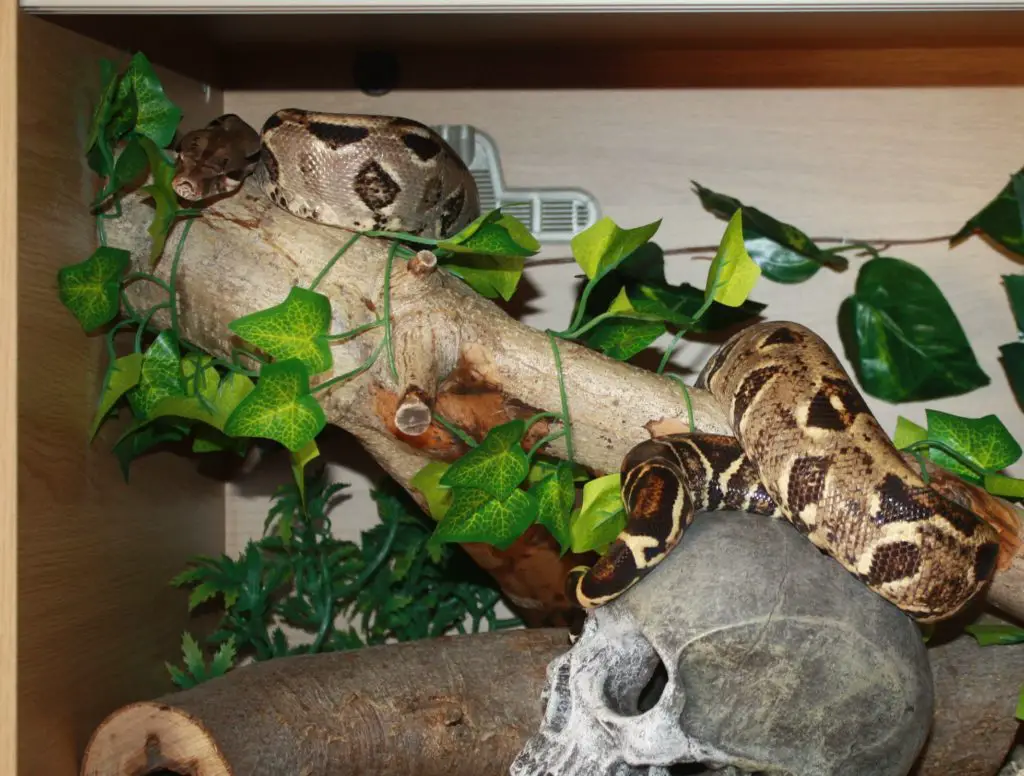
Boa Constrictor Enclosure types
For young animals up to a year old, big plastic tubs/bins work great. These can easily be kitted out with fake branches and plants to provide climbing opportunities. They also have the advantage of being cheap and easy to clean. Personally, I like the enclosure to grow with the snake, so I wouldn’t want to spend a lot of money on a 2ft (60cm) vivarium when I know it will be outgrown within 6 months!
For older animals 2 types work well: PVC vivariums, and your typical melamine (wood) vivariums.
PVC vivariums are best but can be expensive. The reason I say they are best is that they maintain humidity well but aren’t degraded by it.
Melamine (wood) vivariums also work well but will deteriorate over time if the bottom is not sealed with aquarium safe silicone. Big Boas can produce a lot of pee at times and if it seeps into the joints it can deteriorate the wood or become a reservoir for germs.
If you intend to breed boas then specialised racks are available but tend to be very expensive. This is something to consider when making long-term plans.
In my experience, Ball Pythons and some colubrids like Milk Snakes are happy in racks, but boas just get fat and aren’t really suited to them.
Boa constrictor enclosure size
Unlike ball pythons which regularly fast – boas will eat, and eat, and eat. Combine this with a small enclosure and an adult Boa can quickly become morbidly obese. When this happens heart disease and a shortened life span won’t be far behind.
Adults in the 3-5 ft range should be kept in enclosures that are at least 4ftx2ftx2ft (120x60x60cm) whereas adults in the 5-8ft range should be kept in enclosures that are at least 6ftx2.5ftx2.5ft (180x75x75cm).
For exceptionally large adults, i.e., over 8ft then an 8ft (2.4m) enclosure will be needed.
Baby Boa Constrictors can start life in a 12-18in (30-45cmcm) enclosure and upgrade gradually. Avoid starting them in enclosures that are too big – it makes it harder for them to thermoregulate and they will feel less secure.
What do Boa constrictors need in their enclosure?
Compared with less active species like Ball Pythons, Boa Constrictors are much more likely to lie out and have a stretch, using space in a more linear way.
Don’t let this fool you though – they still absolutely need two, sturdy hiding places. One in the cool end, and other in the warm end. This will help them feel safe and relaxed.
For exceptionally large adults you may need to construct a hide from large pieces of cork bark or similar materials, though Exo Terra caves are now coming in some huge sizes. These hides are great if you can find them.
Young boas will appreciate some branches for climbing but adults may not use them much once fully grown, in this case you can give them low branches and decorations to climb over and around.
Finally, make sure you provide a large water bowl with clean water at all times.
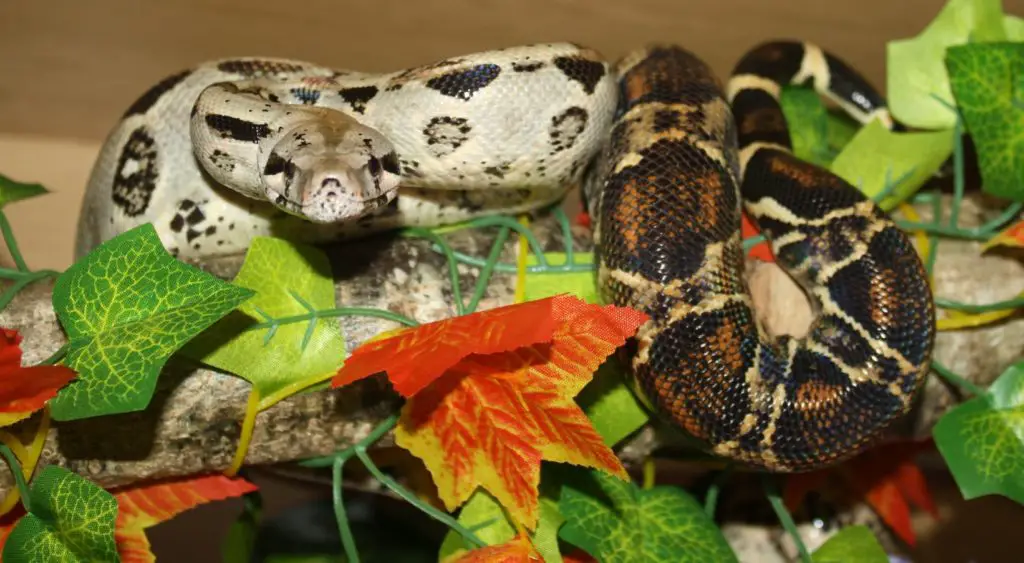
Best substrate for boa constrictors
When choosing a substrate for this species, remember they make big messes, and their substrate will need changing regularly. In this case, expense starts to be an issue that needs consideration.
As they enjoy reasonably high humidity, their substrate needs to be mould resistant or quick and easy to replace. Newspaper, coco chips, cypress mulch or orchid bark are best in my experience.
Though there is a lot of scaremongering about newspaper ink, you can easily buy unprinted newspaper offcuts online, and often at wholesale prices. Don’t count this one out just yet!
Cypress mulch and coco chips both tend to have low resistance to mould, which is a shame as they look good and maintain humidity well. If you opt for one of these be prepared to change it more often.
Last, but not least, aspen works ok for these snakes, but only if you have great ambient humidity in your home. If not, it quickly gets dried out by ceramic heat emitters.
I know I always mention it – but never use cedar or pine for any snake species. These woods are toxic.
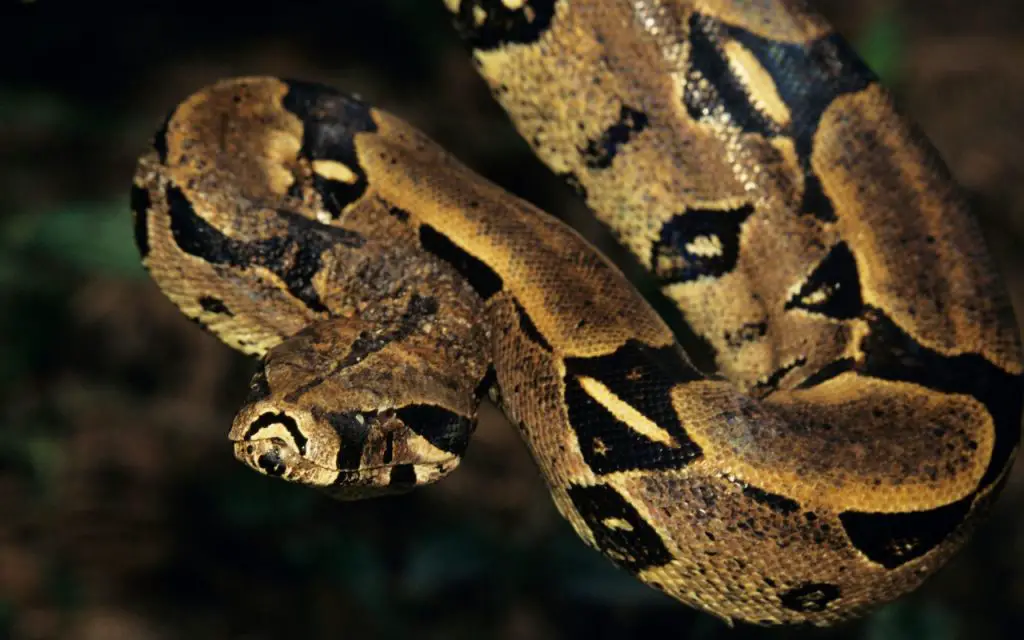
Boa Constrictor lighting
Whilst Boa Constrictors are nocturnal, they do need to know what time of day it is, so some form of lighting is beneficial. In my experience a light on in the room is good enough for this, if it is on for the correct length of time.
For Red Tail Boas (B. c. constrictor), I would advise you to stick to a 12hr photoperiod year-round. In most places that they live, the sun rises at 6am and sets at 6pm.
For Common Boas, which live further north, I would advise a 13hr photo period without seasonal changes unless you intend to breed them.
As far as UV light goes, it isn’t necessary for Boas because of their nocturnal nature. They can readily absorb vitamin D from their prey and use it to synthesize calcium. You don’t have to give them UV light so long as you’re providing them with healthy, high-quality rodents to eat.
That said, some Boas will bask occasionally, though this is usually simply to warm up. If you notice your Boa trying to bask then there’s no harm in providing UV, it just isn’t strictly necessary.
When reading other resources please be aware that the studies on UV light for nocturnal snakes are often funded by people who wish to ban you from keeping them (trust me, I’ve met some of them). To date, there’s still no solid proof that UV light is beneficial for nocturnal snakes. The aim of these studies is to challenge the way hobbyists keep snakes, then make it harder/more expensive to keep them, and easier to push for bans.
Hygiene and cleaning
Let me put this simply: big snakes = big mess = a lot of germs. This means you need to spot clean immediately if your Boa makes a mess. It also means that bioactive vivariums can only work for them if you are willing to completely tear them down and replace everything every few months.
Whichever type of enclosure you choose, be sure to completely change the substrate every month and clean the whole inside with veterinary-approved disinfectant.
For their part, water bowls should be emptied every few days. Clean them with a sponge to remove any bacterial film and avoid water bowls that are porous.
What do Boa constrictors eat?
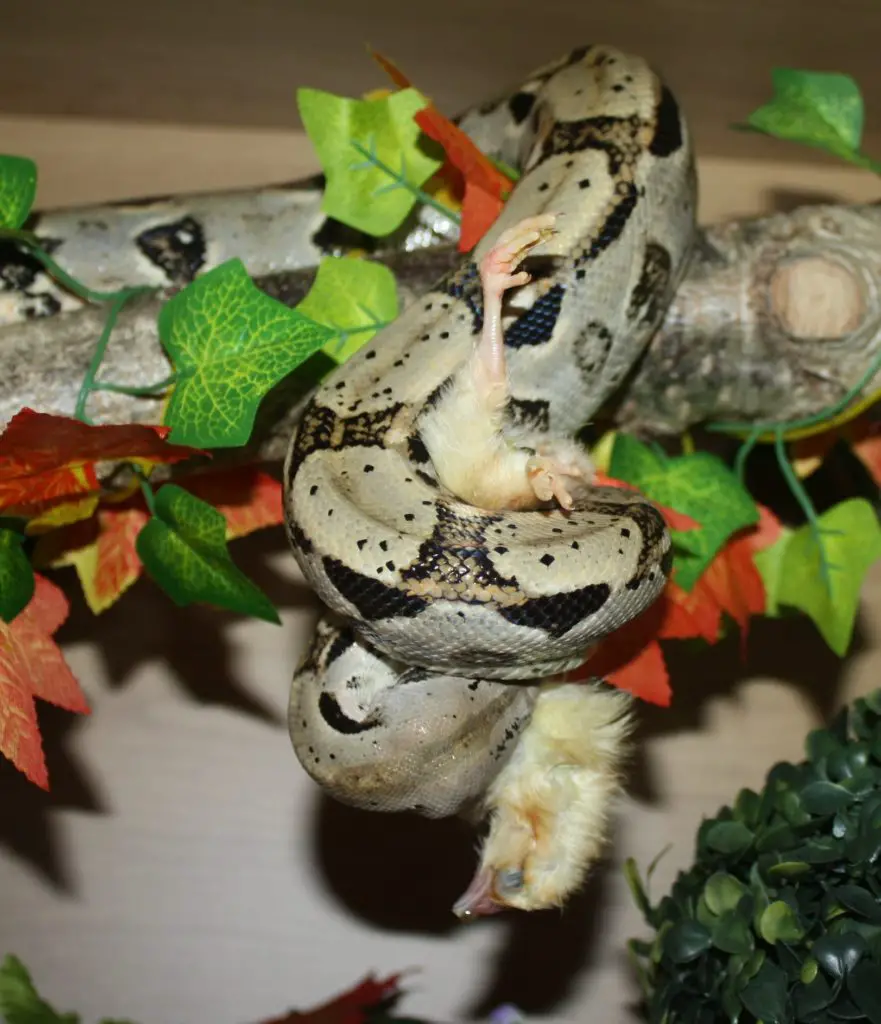
These snakes have a great appetite and will eat range of prey in the wild, though they do prefer rodents, bats and birds.
For captive Boa Constrictors, rats are by far the best food source and most adults will be happy with one large or jumbo rat every 7-14 days. From time to time, you can also add in chicks or quails for a little variety.
Red Tail Boas have a slower metabolism than Common Boas (BCI) so be careful not to overfeed them. Healthy animals should have a body shaped like a loaf of bread: if their flanks start to bulge out you know their getting fat. Generally, an adult Red Tail Boa will be happy with a jumbo rat every 14 days.
Feed neonates of both species every 5-7 days until a few months old then every 7 days until growth slows down. Rat pups are the ideal size to start them on, upgrading in size as time goes by. As a general rule, a prey item as wide as the snake’s body is fine.
Please bear in mind that getting bitten by a hungry adult Boa Constrictor will be painful! Always, put safety first and use feeding tongs or forceps.
Boa constrictor morphs
Boa constrictors are now available in some awesome morphs, especially Common Boas (Boa imperator)! These include Motley (unusual pattern), Jungle (unusual pattern), Hypo (reduced melanin), Albino, Leaucistic (all white) and Melanistic (all black).
Though not quite as varied as the Ball Python morphs, they are catching up and very much in demand. Check out the two below and you’ll see why…

Did you know?
The key to distinguishing between most Common Boas and Red Tail Boas is in their pattern.
Both species have dark dorsal saddles on a lighter background. In common Boas they go straight from one side of the body to the other, whereas in Red Tails they have a point in the middle. Furthermore, in Common Boas they tend to be thicker and closer together.
Red Tail Boas also tend to have a much deeper, mahogany colour to the saddles on their tails
The exception to this rule is the Argentine Boa (Boa constrictor occidentalis), a subspecies of the Red Tail Boa (Boa constrictor) that is very dark all over.
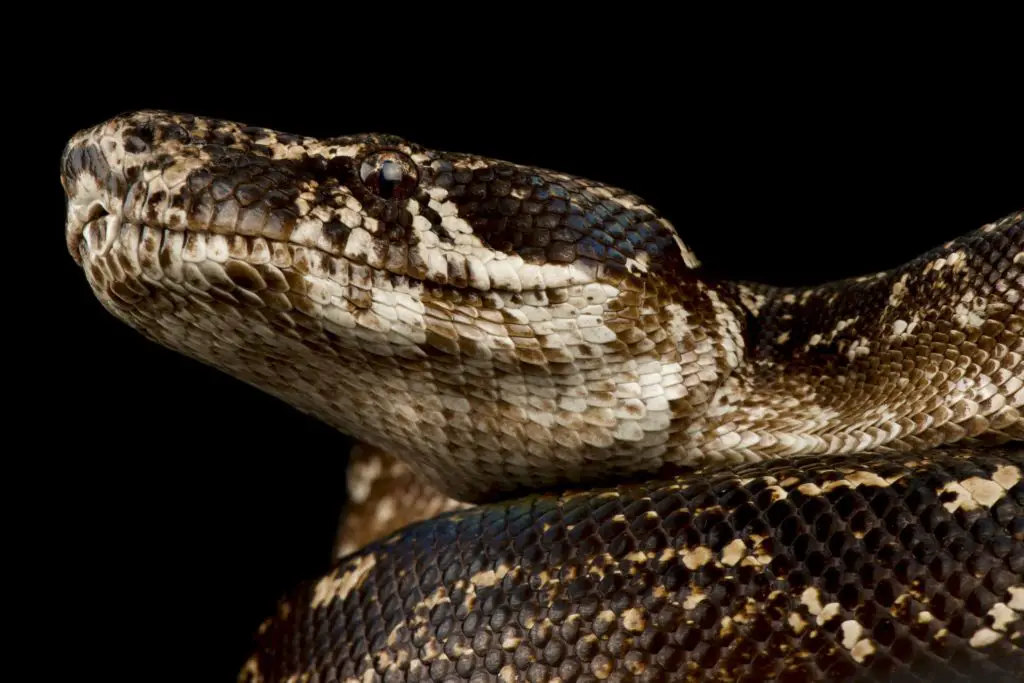
Boa constrictor handling
Many unusual myths about handling Boas are starting to appear! This is unfortunate as most Boas do tend to be very calm, unaggressive snakes. No myths are needed – just gentle handling.
One such myth is that you can “train” them not to bite by putting them up to your face regularly, or by refusing to let them return to their enclosure after a bite.
Both these ideas are not only wrong, but dangerous for the first one and cruel for the second.
First off, let’s not forget that Boa Constrictors don’t have heat sensing labial pits. They won’t strike at your face because it’s a heat source – they’ll do it because you’re annoying them, and they think your face is the most sensitive place to bite.
Never, ever put a large constrictor up to your face. You simply can’t train most snakes like a cat or dog – let’s not tempt fate.
Second, if a Boa Constrictor bites during handling, this is an indication it is distressed. It’s had enough and wants some peace. Refusing to let it return to its enclosure prolongs the distress and is therefore a form of cruelty.
The truth is that Boa Constrictors are exceedingly easy to tame as babies. Get them out once every few days – wearing gloves if it makes you more comfortable – and handle them gently. Let them crawl through your fingers for a few minutes then put them back. Some are nippy, but the bites are harmless and with a few handling sessions about 99% of them tame down and become incredibly peaceful, calm snakes.
If you are offered an adult boa that is aggressive you should not take it unless you are confident handling large snakes and don’t mind painful bites.
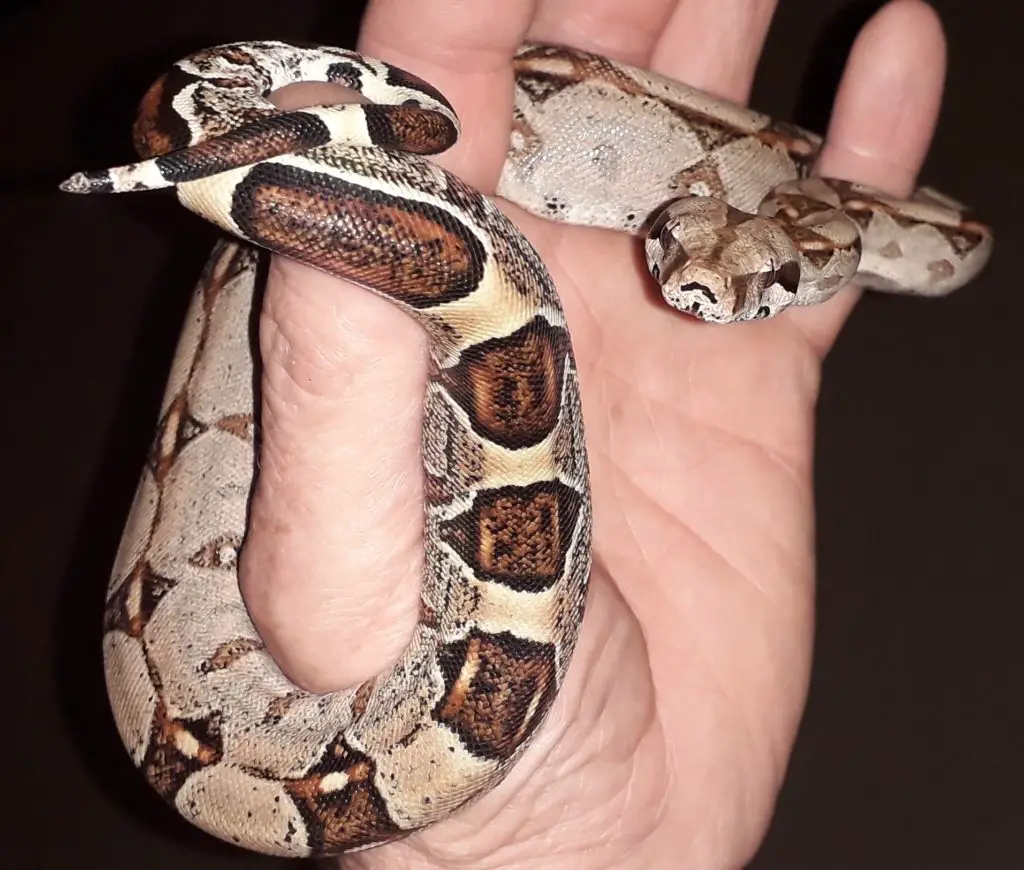
Can a Boa Constrictor kill you?
No, a Boa Constrictor cannot kill or eat you. They just aren’t big enough. To date, there is only recorded case of a Boa Constrictor killing someone in all of history, and it was a combination of both poor care and poor (wreckless) handling.
In general, the only way a big Boa can be dangerous is if you put it around your neck. Though a lot of people do this, there’s no reason for it.
It might be convenient to carry a big snake this way, but the truth is that most of them don’t like it. In fact, some get frightened and accidentally squeeze uncomfortably hard because they’re afraid of falling.
What to do if a boa constrictor bites you
Again, a lot of weird stuff floating around the internet for this one. Most of it will result in injuries to you or the snake.
The best method I have seen in all my years is this one:
Are boa constrictors good pets?
In conclusion, Boa Constrictors are hardy, long-lived, peaceful pets. Give them adequate space, heat and humidity and they’ll be a companion for 20 years or more. Some individuals have even lived to over 30.
Whether they’re good pets, however, depends on your criteria. When compared with smaller species like Corn Snakes, Boa Constrictors need more space and bigger prey. Asides from these points, they are every bit as hardy and beautiful.
In my opinion, Boa Constrictors make fantastic pets, and are one of the best pet snakes.
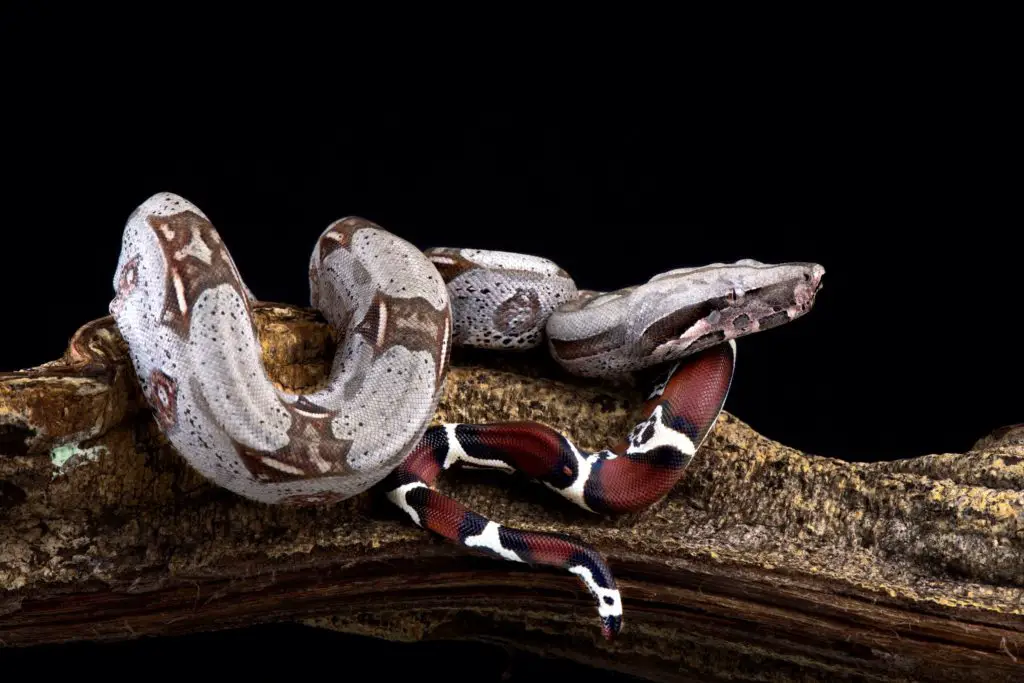
Boa Constrictor care Summary
| Temperature: | Warm end 85-90f (29-32c), cool end 80-85f (26-29c). Nighttime drop to 75-80f (24-26c) on the cool side |
| Humidity: | 60-70% |
| Favourite food: | Rats |
| Enclosure size: | 12-18in (30-45cm) for neonates 4x2x2ft (120x60x60cm) for 3-5ft (0.9-1.5m) long adults 6×2.5×2.5ft (180x75x75cm) for 5-8ft (1.5-2.4m) long adults minimum 8×2.5×2.5ft (240x75x75cm) for adults over 8ft (2.4m) long |
| Activity rythm: | Nocturnal |
| Lighting needs: | UV not necessary but ambient lighting beneficial |
Key points to remember about Boa Constrictor care
- Boa constrictor imperator, commonly referred to as the Common Boa or Colombian Boa, is slightly smaller, cheaper and hardier than true Red Tails (Boa constrictor constrictor). This make’s it a slightly better choice for beginners.
- A pet Boa Constrictor is a big snake – make sure you are prepared to pay for a large enclosure, possibly even 8ft (2.4m) in length for exceptionally large females.
- Most health problems that I see in these snakes are related to inadequate temperatures! Check and double check your snake’s ambient temperature and temperature gradient over the winter months.
- A good humidity level of 60-70% is important to these snakes. As they don’t always take well to using a humid hide, try to provide a substrate that helps maintain humidity. General speaking, wood chips and aspen bedding don’t do well at this, so you may need to opt for coco chips, cypress mulch or orchid bark instead.
